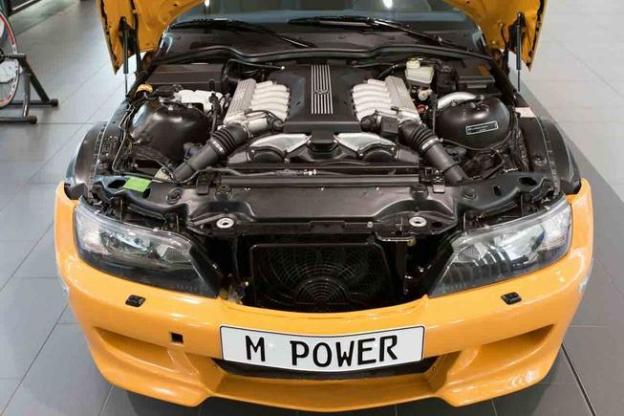 BMW’s M division creates some of the best performance cars around, but what do its engineers do for fun, when the constraints of crash tests and marketability aren’t hanging over them? Apparently, they put very large engines in very small cars. BMW recently took the wraps off a V12-powered Z3 roadster built by the M division several years ago.
BMW’s M division creates some of the best performance cars around, but what do its engineers do for fun, when the constraints of crash tests and marketability aren’t hanging over them? Apparently, they put very large engines in very small cars. BMW recently took the wraps off a V12-powered Z3 roadster built by the M division several years ago.
The Z3, predecessor to today’s Z4, was built between 1996 and 2002, so this one-off prototype had to have been built in that interval. At the time, BMW was making a V12, code named M73, that was used in the 8 Series coupe, 750i sedan, and the Rolls-Royce Silver Seraph. It displaced 5.4-liters and produced 326 horsepower and 361 pound-feet of torque.
A modern BMW V12 makes 535 hp, but that was still a lot of power for such a small car. An 850i coupe weighs roughly 4,000 pounds; a stock Z3 weighs over 1,000 pounds less. With less weight to carry around, the V12 would have really made the Z3 move.
What would the Z3 V12 have been like to drive? Probably terrifying: the Z3 was supposed to be an upscale competitor to the Mazda Miata, so it would not have felt the same with a heavy V12 in the nose. The short wheelbase, combined with the engine’s torque, would have required maximum concentration to prevent catastrophic spins.
The M division did build a production Z3 (the M Roadster and M Coupe), but with a less-extreme inline-six from the M3. In its most powerful incarnation, the M Roadster’s 3.3-liter, 315 hp, engine made nearly as much horsepower as the V12. This may have been another reason why the V12 Z3 was never put into production.
Stock Z3 roadsters came with a 2.5-liter inline-six with 184 hp, or a 3.0-liter version with 225 hp.
The idea of putting a big engine in a small car may not always be rational, but it is always attractive. With its recent move away from high-revving, race-bred engines to turbochargers, diesels, and SUVs, the M Division may want to try it again, just to show what it can do.
BMW still has the excellent N74B60 V12 that powers the 2013 760Li, making 535 hp and 550 lb-ft. The current Z4 roadster looks gorgeous, and there should be plenty of room under its long bonnet. It might not make sense to the marketing department, but who wouldn’t want to see that?



